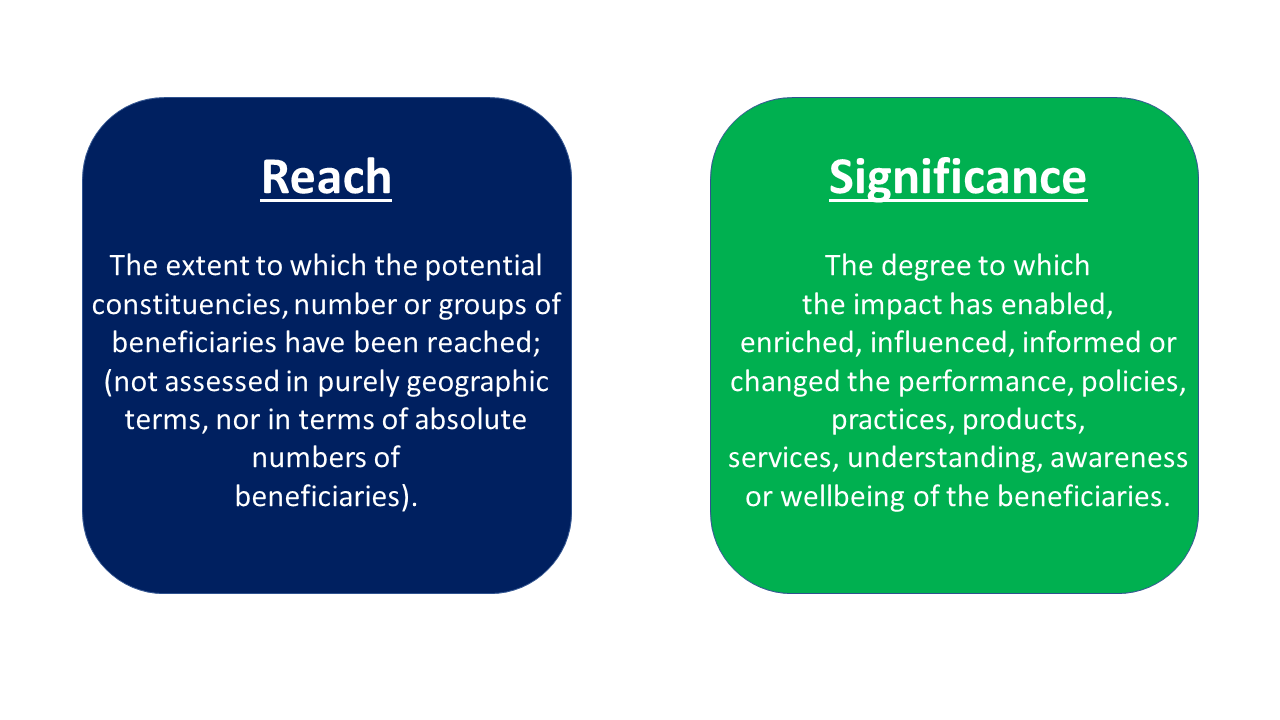Evaluating and evidencing impact
Impact is assessed in terms of its reach and significance:

What does evidence of impact look like?
Evidence of impact may be quantitative and/or qualitative indicators or documentation that corroborates a contribution or change to society as a result of your research findings.
The Research Excellence Framework (REF2021) guidance provides an extremely useful table offering examples of a wide range of impacts, alongside the corresponding types of evidence to support those impact claims.
It is important to understand the difference between evidence of activity (engagement and knowledge exchange) and evidence of impact (the change that may occur as a result of that activity).
For example, presenting your research findings to policymakers is a knowledge exchange activity. An associated outcome might be a change in their understanding, and the impact may be a subsequent change in policy direction as a result of your presentation.
It follows that evaluation of your impact-related activity is essential:
- to generate evidence of outcomes and impacts;
- to develop an in-depth understanding of the nature of the impact that has occurred;
- to understand whether any secondary or tertiary impacts have been generated;
- to inform and enhance future research and knowledge exchange activities.
Find out more about evaluating Public Engagement activities.
If you're planning to secure testimonial evidence from an external stakeholder, please seek advice before doing so.
Download our Impact Evidence Dashboard (Excel)
Download the REF2021 impacts & evidence table
For advice on capturing evidence of the impact of your research contact Lewis Thomson (REF Impact Officer).
Evaluation and evidence resources
- ESRC (2022) Defining impact
- HM Treasury 2022 The Green Book: appraisal and evaluation in central government
- HM Treasury 2020 The Magenta Book: what to consider when designing an evaluation
- Public Health England 2018 Guidance: Introduction to logic models
- Theory of change in ten steps
Theory of Change and Logic Models are similar approaches. They both map out the resources you need, the activities you take part in, what you will deliver, as well as the outcomes and impacts that you are trying to achieve. Our Personal Impact Plan (PowerPoint) uses a simliar approach.
The REF impact case study databases are a useful resource with regards to understanding the types of evidence used to substantiate impact claims:

